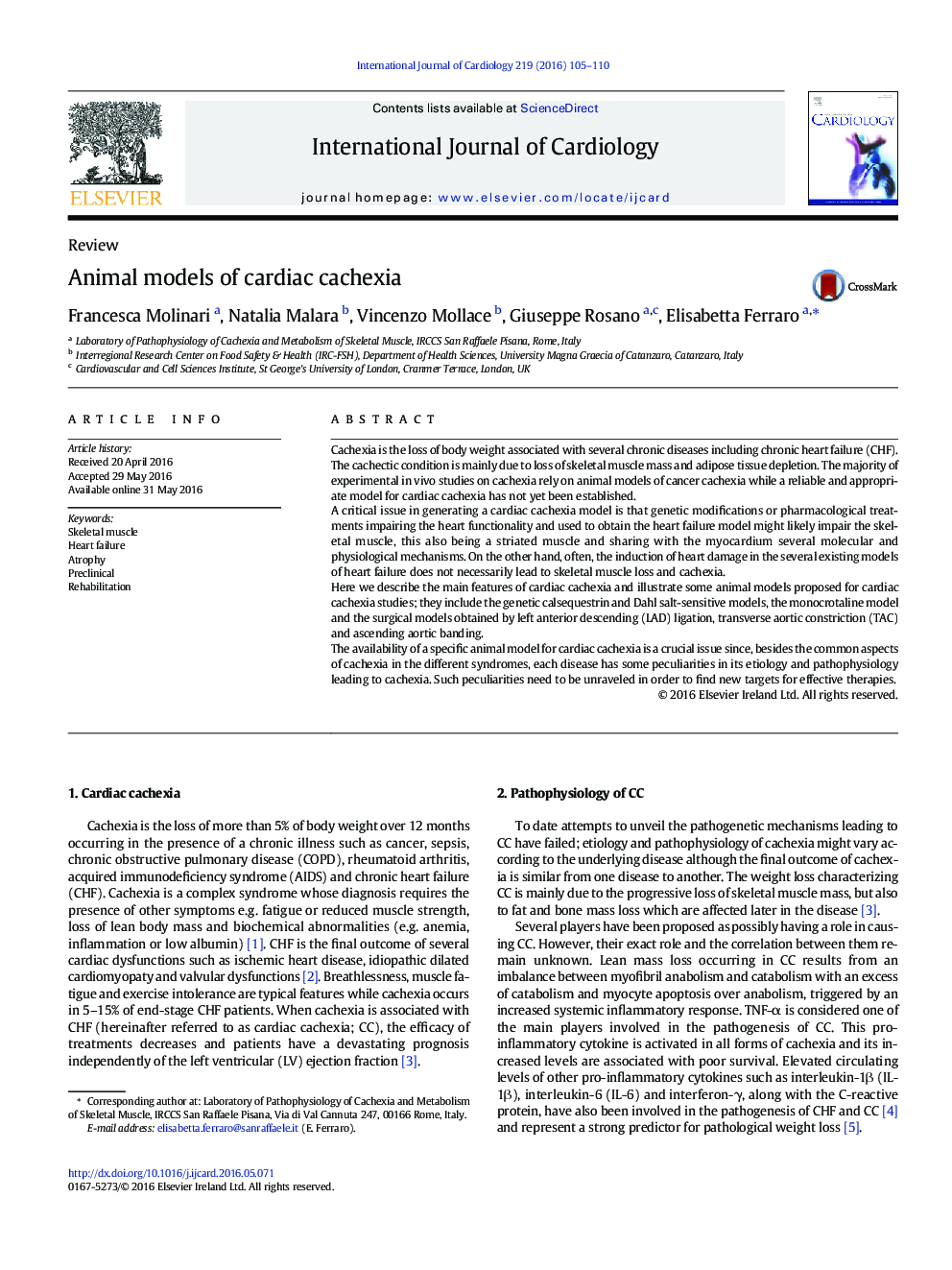| Article ID | Journal | Published Year | Pages | File Type |
|---|---|---|---|---|
| 5963596 | International Journal of Cardiology | 2016 | 6 Pages |
â¢When cachexia is associated with heart failure, patients have a devastating prognosis.â¢Animal models are important to unravel the pathophysiology of diseases in order to find new therapeutical targets.â¢Most studies on cachexia use animal models of cancer cachexia.â¢The availability of animal models of cardiac cachexia is crucial to allow a rigorous assessment of treatments.â¢Genetic, pharmacological and surgical models have been proposed for cachexia of cardiac origin.
Cachexia is the loss of body weight associated with several chronic diseases including chronic heart failure (CHF). The cachectic condition is mainly due to loss of skeletal muscle mass and adipose tissue depletion. The majority of experimental in vivo studies on cachexia rely on animal models of cancer cachexia while a reliable and appropriate model for cardiac cachexia has not yet been established.A critical issue in generating a cardiac cachexia model is that genetic modifications or pharmacological treatments impairing the heart functionality and used to obtain the heart failure model might likely impair the skeletal muscle, this also being a striated muscle and sharing with the myocardium several molecular and physiological mechanisms. On the other hand, often, the induction of heart damage in the several existing models of heart failure does not necessarily lead to skeletal muscle loss and cachexia.Here we describe the main features of cardiac cachexia and illustrate some animal models proposed for cardiac cachexia studies; they include the genetic calsequestrin and Dahl salt-sensitive models, the monocrotaline model and the surgical models obtained by left anterior descending (LAD) ligation, transverse aortic constriction (TAC) and ascending aortic banding.The availability of a specific animal model for cardiac cachexia is a crucial issue since, besides the common aspects of cachexia in the different syndromes, each disease has some peculiarities in its etiology and pathophysiology leading to cachexia. Such peculiarities need to be unraveled in order to find new targets for effective therapies.
